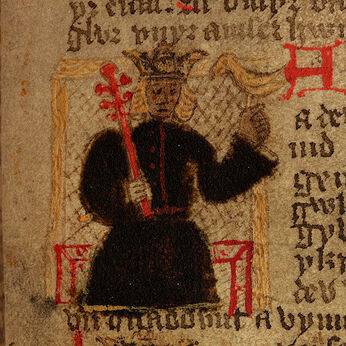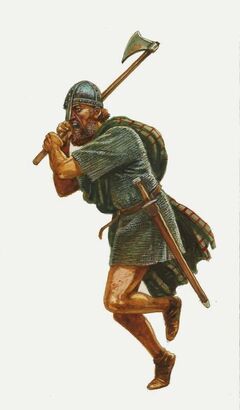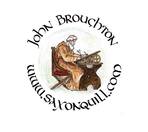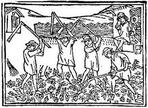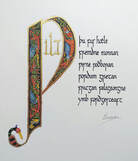|
This particular blog began as an idea of mine to write a bucket list of Anglo-Saxon monuments and sites that I’d still love to visit. Since many of my ideas mutate through distraction or curiosity, here we are with a totally different blog. Have you noticed how many place names in England contain the word minster? Westminster might be the most famous, but I’ve counted at least thirty and each has its own fascination.
First, let’s see what minster means. It’s an ecclesiastic word, dating from Anglo-Saxon times. The word derives from the Old English "mynster", meaning "monastery", "nunnery", "mother church" or "cathedral", itself derived from the Latin "monasterium" and the Ancient Greek "μοναστήριον", meaning a group of clergy where the Brothers would cloister themselves to meditate. Let’s take York Minster as an example to distinguish between Minster and cathedral: it is officially the 'Cathedral and Metropolitical Church of St Peter in York'. Although it is by definition a cathedral, as it is the site of a bishop's throne, the word 'cathedral' did not come into use until the Norman Conquest. The word minster was what Anglo-Saxons named their important churches. Now let’s look at some of the other minsters: Please click the read more button Every day that I sit down to write a historical novel set in Anglo-Saxon times, I’m acutely aware of being a fraud. After all, I cannot reproduce speech patterns of the epoch and if I were that clever, very few readers would understand the Old English language. My novels also have more than their fairsprinkling of Vikings, so I’d have to write in Old Norse, too. What is the historical novelist supposed to do? What can he draw upon? Any half-decent one will aim for Authenticity, but if I write in modern English, I’m not technically accurate. On the other hand, I need to engage my readers in a meaningful way. You see, authenticity cannot be created. The best I can manage is to create a mirage by detailed references to objects of daily life or customs of the time. I have to try not to spoil the effect. Have you ridden backwards in the Jorvik Museum in York? They provide you with artificial smells and sounds that take you back in time, but it’s a mirage that you gladly accept. You don’t have to understand the Viking shouts, but you do have to fight off the thought that it’s a sunny day in twenty-first century Coppergate, outside the museum. Current historical novelists are lucky to have notable forerunners like Sir Walter Scott, Robert Louis Stevenson, Rosemary Sutcliffe and Geoffrey Trease—these stalwarts of the genre have created the expectation of a voice of historical fiction that is not genuinely authentic but that will be familiar to us from the tradition. That is why I must eschew terms like gadzooks, mayhap, forsooth and so on (in any case, not appropriate to Anglo-Saxon times) but I will sprinkle in the occasional hence, thence and whence for a bit of flavouring. In the preface to Ivanhoe, Sir Walter Scott wrote in 1820: ‘I neither can, nor do pretend, to the observation of complete accuracy, even in matters of outward costume, much less in the more important points of language and manners ... It is necessary, for exciting interest of any kind, that the subject assumed should be, as it were, translated into the manners as well as the language of the age we live in. Yes, but there was less angst in 1820 (I think). Today, we have to contend also with a ‘woke’ interpretation of history. But I cannot accept this world view transposed to the eighth century any more than I can write in Old English. I have to site my characters in a pre-Freudian, pre-Darwinian, pre-feminist, and perhaps pre-nationalist context. I apologise but oarsmen weren’t oarspersons and, as far as I know, they weren’t female, but great, hairy Viking men. I can be sensitive, I suppose and write rowers, but oarsmen seems somehow more in keeping with my tale. A special lady writer, Hilary Mantel did not write about Cromwell using Tudor English—if she had, I guarantee she wouldn’t have written a bestseller—but in her use of language she sensitively refers to a suggestion of otherness. In my small way, that is what I try to do in my novels. The best I (and others) can achieve is to impersonate people from an imagined past, not a historical past. 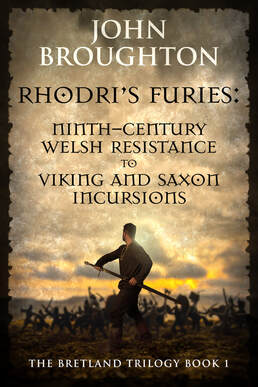 I’m grateful to be sitting writing this blog because three months ago my adorable wife saved me from certain death. Instead, I find myself enjoying every day as if it’s my last. It makes my writing more important and enjoyable. This is what happened: in late August 2022, I began to complain about persistent headache, lethargy and extreme tiredness, then I became unsteady on my feet, which is when my dear, intelligent wife, Maria Antonietta, intervened and called in the cavalry—doctors, paramedics and friends. I was rushed down the motorway in an ambulance to the main provincial hospital in Cosenza. We all know that A&E doctors are overworked and stressed, especially with the pandemic still in course, so they limited themselves to checking my vital signs and pronouncing that there was nothing wrong and that I should return home. My courageous and tenacious Maria was having none of it. She pointed to the general situation rather than specific measurements, relating my atrocious medical history, and importantly, that nobody better than her could comment the deterioration in my condition. Her persistence meant that I was in the right place at the right time. For, while the doctors continued to maintain their position, I unwittingly contributed to Maria’s stand by having a severe epileptic seizure. That convinced the doctors to send me immediately for a CAT scan of my brain. Yes, I do have one! The outcome was to show a massive cerebral haemorrhage. After an emergency operation, I regained consciousness and frighteningly, could neither speak in Italian nor think in English in any coordinated way, nor could I walk. Frankly, I was terrified. However, within forty-eight hours, I began to speak with a rather strange growling voice, so communication was restored. Soon, the hospital decided to transfer me to a rehabilitation clinic at Laurignano, some kilometres from the main hospital. In the midst of my disaster, this clinic shines like a beacon. I cannot speak highly enough of the staff: from the CEO, through the doctors, nurses, physiotherapists and the cheerful ladies, who daily cleaned my room (No.16). Everyone there is so dedicated and while I’m aware that not every day they have an English writer as a patient, they treat everyone in the same way, firstly, as friends and secondly, as patients. I made new friends there and they gave me the will to fight to literally put me on my feet again. The other great incentive, and this is an unfair comparison, was the clinic food, cooked on the spot but in an institutionalised way. How could it compete with Maria’s culinary genius? So, I worked really hard in the gym, impressing my physiotherapists and everyone who daily measured my progress in a desperate attempt to persuade them to send me home. Maria was allowed (covid restrictions) to visit me just one hour per week. On one of her first visits, I begged for a pen and an exercise book, I don’t possess a laptop computer, preferring to work on my desktop Mac. Here was a return to old-fashioned handwriting. I was working on a new trilogy. Having researched why the Vikings, who colonised Scotland, Ireland, England and the Isle of Man, did not succeed in colonising Wales. I was curious and decided that there was a historical fiction trilogy to be written there. Indeed, I had already almost completed Book 1 of the Bretland Trilogy (Viking name for Wales) when with only three chapters to write, the medical error that provoked my haemorrhage struck. To be brief, I had been given too high a dosage of anti-coagulants, which provoked the crisis. I found myself unable to write for weeks, but I knew my story and astounded the clinic staff by writing pages and pages of longhand when not occupied in the gym. This was a blessing on Sundays, with no gym twice a day and alone in my room, I really made progress and finished Rhodri’s Furies. You can imagine my delight when I signed the contract for this book last month. It was published on 12 December 2022. I’ve attached the cover to this blog. Despite my astonishing progress, there was no way the clinic would be irresponsible and allow me to return home until they were certain that I would be all right. So, I began Book 2 Avenging Rhodri, and wrote the first five chapters in the clinic until the great day arrived. On 29 October, my friend Dino arrived with Maria to take me home. This morning, December 17, as I sat admiring the Christmas tree next to my desk and praised the Lord that I wasn’t left with permanent damage, I only had to decide whether to continue with chapter 21 of Avenging Rhodri or to bore you (like a typical elderly man) with my medical woes. I hope I haven’t bored you too much. The circumstances leave me with a quandary. To whom should I dedicate this trilogy? I’m spoilt for choice. The obvious one is my darling Maria, but I’ve already dedicated books to her because without her devotion and understanding, none of my 32 novels would have been completed. Then there’s my physiotherapist Annalisa, to name one of a team of dedicated professional people. I can’t bear to neglect any one of them! So, I have much to be grateful for and would like to share the importance of writing my novels in keeping me going. The secret to longevity is not wanting to leave an unfinished work! That’s why I’m prolific, starting one as soon as I finish another. I know that I can only cross the Rainbow Bridge when I don’t have a work-in-progress!
A crude illustration from a 15th century Welsh language version of Geoffrey of Monmouth’s highly influential Historia Regum Britanniae The decision to write a trilogy set in the so-called Dark Ages was always going to be complicated. I should know as I’ve already written two of them set in Anglo-Saxon England. As if the task needed exasperating, I chose to write about ninth-century Wales. My interest was piqued by a simple curiosity. If the Vikings colonised Ireland, the Isle of Man, Scotland and England, why didn’t they manage to do the same in Wales? It is actually a fun question to answer because the question poses so many sub-questions. Finding an answer is complicated because the darkness of Dark Ages Wales is, choose your black metaphor here, darker than the rest because Wales was off the beaten track and as such, provides us with less written and archaeological testimony. Written? Let’s take for example, one of the main characters in my ongoing Book 1 of the trilogy, Rhodri the Great. Great? Well contemporaries didn’t give him that title. How reliable can it be if it was attached to his name more than 400 years later by a Welsh writer? It’s like saying that in 2422 a historian will decide to call Queen Elizabeth II, Elizabeth the Great. The difference is that my hypothetical historian, barring a cataclysm, will have a mass of material to draw on to back up his statement. Researching material about Rhodri, I discovered that apart from the skeletal facts regarding his reign, the richest source happens to be a Welsh historian from pre-1923 period: John Edward Lloyd MA. Subsequently, serious scholars have tended to lean on his work. Unless, of course, you consider the Annales Cambriae, a complex of Latin chronicles compiled or derived from diverse sources at St David’s in Dyfed, Wales. The earliest is a 12th-century presumed copy of a mid-10th-century original; later editions were compiled in the 13th century. So, that’s the minefield for me to tiptoe through and I’m not complaining because seeking some answers can be as enjoyable as it is frustrating. What about the sub-questions? Did the Vikings not colonise because Wales couldn’t provide fertile agricultural land? False. Wales contains within itself a similar variety of landscapes to what is found elsewhere in the British Isles. It contains mountains, hilly country, as well as low-lying ground more suitable for farming. Another thing Wales has in common with the other lands of the British Isles is miles and miles of coastline (1680 mile to be exact). The fact that there were no large tracts of Welsh soil conquered by the Vikings is not due to the unsuitability of the land. Evidence points to peaceful settlement and coexistence with the native Welsh. The Vikings came and plundered; we know that from contemporary Scandinavian written sources. The Norsemen called Wales Bretland: hence the provisional title for my trilogy – The Bretland Trilogy. They also established various place names in Wales, such as Haverfordwest, Swansea, and Anglesey, which were in the coastal or low-lying areas. So, we can say that the answer to my first sub-question is that they didn’t fail to colonise Wales because the farmland was unsuitable. Timber? The Vikings needed timber for their longships and to build their houses. During the early Middle Ages, Wales was rich in timber. There was much more forested land than there is now. So, that slams another door shut. What about slaves then? The Vikings were very active in a slave trade that spanned the breadth of Europe and influenced slave markets beyond. But the Welsh took an active part in this trade, supplying slaves for the Scandinavian middle men from their own hinterlands and from the lands of the Saxons. In southern Wales, Swansea and Cardiff provided markets for these deals. Another blind alley. What about lack of natural resources other than timber? Excavations at Dinas Emrys in north Wales and at Dinas Powys in the south indicate that blacksmiths worked in iron acquired from local ore. (Davies, Wales in the Early Middle Ages, 49). In addition to iron ore, there were also gold, copper, and lead mines in Wales. There was even a gold mine at Dolaucothi. Wales was not without mineral resources. They would have been attractive to the Vikings. So, there goes another possibility. The most glaring reason had to be geography. Look at a map of Europe. Put Wales in relation to Scandinavia and you see at once that it was inconvenient to the Vikings: out of the way. As Vikings from Denmark cross the North Sea, the first land they come to is England. If the raiders are coming from Norway then Scotland is closest. Coming from Norway and not stopping in Scotland, continuing around to the west, through the Hebrides, they come to Ireland before Wales. For the Danes who didn’t want to stop in England, they would have to sail through the English Channel. The rich monasteries of northern France would have proved alluring. The question of why the Vikings didn’t colonise Wales became so intriguing at this stage that I felt the answer had to lie in the Welsh people themselves. Could I write a historical novel about it? you bet! Not one, but three – I hope! Rhodri ap Merfyn, also known as Rhodri Mawr (the Great) came to be king of Gwynedd in the mid-ninth century. By the end of his reign, he ruled most of Wales through a combination of diplomatic marriage and conquest. He was a strong leader who was able to bring most of Wales into a united front against the Vikings. He scored a significant victory over the Vikings in 856. So, there’s Book 1 for me with the provisional title Rhodri’s Furies, but let me not get ahead of myself. After all, I’ve only written the first 35000 words and am about to start Chapter 11 as I write this. I have identified the main characters of Books 2 and 3, but as yet, there is no outline for either. In conclusion, isn’t it curious how concepts for novels can arise out of curiosity? Unanswered questions need answers. Mine is a search conducted by blundering around in the Dark Ages – by a man in a windowless cellar without a candle!  The American engineer and magnate Henry T. Ford once famously said history is bunk. He spent many years under attack for this, including in a Chicago libel case against The Tribune. This unfortunate turn of phrase might have set me against Americans in general, but I know better. An American president, Harry S. Truman said, there is nothing new in the world except the history you do not know. Apart from the wisdom in those words, one of my favourite all-time historical novelists is an American: Gore Vidal. He wrote a wonderful novel titled Julian about the last apostate Roman emperor. It takes courage to write over 400 pages on imperial Rome in the modern literary marketplace, throw in ancient philosophy, old gods and you’d think it might be a cure for insomnia, but Vidal is a master of storytelling and he wrote a compelling biography, full of gripping dialogue and a plot full of twists and turns. Emperor Julian American literary critic, D. Driftless wrote: “Julian is a compelling, albeit unflattering, look at Christianity’s rise as a world religion during the 4th century, as seen through the eyes of one of its most prominent opponents. I strongly recommend it to those who’ve enjoyed Vidal’s other work, but would recommend Burr or Lincoln for those who are new to his historical novels, as they show him at the top of his form and are more accessible to the modern American reader.” I make no apology for digressing about Gore Vidal - the pleasure is mine! But I will return to my argument. I firmly believe that historians supply us with the facts, historical novelists with the empathy. Hence, why Vidal’s style of historical fiction is superior to traditional history writing, making for a more entertaining and memorable product, while still relying on the actual facts. As a writer of historical fiction, I’m trying to achieve something better than a simple reconstruction of history. I’m attempting to create an immersive story that brings interesting characters to life while simultaneously capturing something essential, not only about the historical setting, but also about the deeper truths of human existence. Historical fiction reflects the mistakes and triumphs of those who have gone before us, showing how events affected people by personalizing them, making them resonant and emotional, in individual stories. Seen from this perspective, history is a window into our future. It’s an inescapable fact that people are creatures of habit. Therefore, they live their lives in a series of patterns and reactions. By studying these patterns in the lives of the great, but also the common man from the past, we can predict the future. We can prepare ourselves and even take a stand now.Historical novels don’t just tell us what happened; they make us feel. They create empathy for what other people went through in different times, in a way that is divorced from our own political situation today. We can better understand where female emancipation – the suffragettes – came from if we’ve read Pride and Prejudice. Jane Austen teaches us about an age where a woman’s economic survival depended on whom she married or if she married at all. It’s hard for me to imagine a modern feminist who hasn’t read Austen! There are some amazing novels about the nascent Nazi Germany and I’m convinced that however powerful autobiographies and biographies are in the right hands, there’s nothing as emotionally powerful as the prose of a skilled historical novelist. We can learn from being transported by words not to be transported in cattle trucks! That is, if we learn the lessons of history.
A new area of archaeological technology so fascinates me that I’m thinking of writing a novel based on it. I’m only at a vague stage of conceiving the novel but I’d like to write about what I’ve discovered in this blog. I’m talking about drones and satellites. Remote sensing is the process of detecting and monitoring the physical characteristics of an area by measuring its reflected and emitted radiation at a distance. (This can be done from a satellite or aircraft). Technologically advanced cameras collect remotely sensed images, which help researchers "sense" things about the Earth. Satellite images help scientists find and map long-lost rivers, roads, and cities, and discern archaeological features in conflict zones too dangerous to visit. England, luckily, isn’t one of those tormented areas, but has a fair share of DMVs (Deserted Medieval Villages) that were abandoned owing to enclosures, famines, disease etc. Satellite archaeology is an emerging field of archaeology that uses high resolution satellites with thermal and infrared capabilities to pinpoint potential sites of interest in the earth around a meter or so in depth. Obviously, satellite images can be used to detect, to acquire an inventory, and to prioritise archaeological information in a rapid, accurate, and quantified manner. Years of old-style field walking could actually miss what is obvious from the air, although an expert who knows what he’s looking for can still produce ground-level revelations. One of the newest archaeological aids is the drone. Drones provide a useful low-level aerial platform for recording historic buildings, monuments, archaeological sites and landscapes. They can carry a wide variety of sensors including cameras, multi/hyperspectral imaging units, and even laser scanners. This technology is clearly beyond the means of the amateur enthusiast, but a drone fitted with a camcorder is attainable and will allow sleuthing even with a modest expenditure. Many academic papers have been written in recent years about this technology. Readers here might be interested in a book that I’m happy to recommend that contains reference to several positive technological experiences including drones: Anglo-Saxon Studies in Archaeology and History edited by Helena Hamerow. Moving my focus away from Britain, archaeologists have discovered 500 previously unknown Mesoamerican sites in Mexico hidden in plain sight using laser technology. Using laser pulses tied to a GPS system, LiDAR (Light Detection and Ranging, or LiDAR, technology) took topographical readings to create a three-dimensional map of a 30,000-square-mile area around eastern Tabasco. When archaeologists analysed the data, they found evidence of 478 sites that would have been part of precolonial settlements between about 1400 B.C. and 1000 A.D. “The study foreshadows the future for archaeology as LiDAR reveals ancient architecture at an unprecedented scale that will reach into remote and heavily vegetated regions the world over,” Robert Rosenswig, an archaeologist at the University of Albany-SUNY, wrote in an accompanying article for Nature, calling LiDAR “revolutionary for archaeology.” Returning to the U.K., an aerial mapping project conducted by the National Trust on the Wallington Estate in Northumberland, England, just uncovered 120 new archaeological features. The organization began the project to help draw up plans for planting 75,000 British native trees on the 13-hectare estate. (The trust aims to plant 20 million trees by 2030 to help combat climate change.) Creating a 3D digital map of the landscape allowed the trust to identify the site of historic woodlands that had been cleared in the mid-18th century, as well as former farming systems. The oldest prehistoric sites on the state identified through the LiDAR scans date back to as early as 2000 B.C. As I mentioned above, there are many academic papers relating to a vast amount of new information about our hidden past. Unfortunately, I cannot reproduce the aerial images here as they are all copyrighted, but many of the said articles contain them. I find it fascinating and hope that my research might lead me to write a gripping new archaeological-historical novel. Who knows? To create my own version of historical dialogue, one that is as true as possible to the period without sacrificing believability is the challenge I face in every one of my Anglo-Saxon novels. Trying to reproduce the way people actually spoke in a given historical period is impossible. That is as true for a novel set in the early medieval period as it is for any other century, with the possible exception of the twentieth century, which someone of my age can easily reproduce.
Whilst it’s obvious that the writer must strive for as much authenticity as possible in the dialogue, it’s less obvious how to go about it. There are clearly some restrictions. Only a poor author would attempt to introduce modern Western slang into a story set, say, in the eighth century. My approach is to use modern everyday language in historical dialogue whilst avoiding anachronisms and glaring modern expressions. The avoidance off the former can be tricky; it’s not just a question of knowing when coffee was introduced into Europe, but also a question of weights and measures. Even time is tricky to convey—no digital watches in the seventh century! I’ve been known to explain a brief passage of time in terms of heartbeats. In my first novel The Purple Thread, I referred to an eighth-century sundial on a church wall. Its gnomon was no more than a stick in a hole, but the shadow cast marked the canonical hours so familiar to the monks and nuns, who marked Prime, Nones and vespers among other dservicesw ith the chiming of bells. Longer periods can reference the position of the sun in the sky, the length of shadows etc. small measurements could have been in barleycorns set end-to-end. Luckily, charters refer to land measurements and they can help achieve authenticity. But back to dialogue: to contract or not? Personally, I tend towards contractions in informal speech. Why not? Jane Austen didn’t (sic!) in her novels whereas Charles Dickens did in Great Expectations. Just as in a modern novel, speech patterns can identify the social status of a character. A ceorl is hardly going to speak with the same inflection as an ealdorman. So, what about vocabulary? My choice of era means I’m not in the slightest tempted by forsooths, mayhaps and perchances (fortunately!) but I can provide the illusion of historical authenticity by careful dosing of some contemporary words. These may be references to coinage, such as sceattas, or the aforementioned weights and measures, also weapons like the seax. The use of names also works, but I confess to irritation when a reviewer criticises me for using difficult names “I couldn’t get past the difficult names,” is a sentiment I’ve read once or twice. Come on, Deormund, Begiloc and Cynethryth aren’t so difficult to get your head around, especially if their story grabs you. One concession I have made to my readership is to abandon my early tendency to give places their contemporary names. So now you will find Ipswich instead of Gippeswic. I can see that my earlier choice might have made it heavy going for readers. So, not to lose out on my sprinkling of authenticity, sometimes I’ll refer to a place and write that Ipswich was known to the locals as Gippeswic. In the end, it’s important to strike a balance between accuracy and understandability. Then, what about the great modern trend towards political correctness? That leaves me seething. An editor once changed oarsmen into rowers because oarsmen was not inclusive enough. I’m not sure how many shield-maidens were rowing down the Trent to Gainsborough in the tenth century, but I’ll bet the Vikings didn’t give a damn about political correctness! I’m quite happy to let my historical characters espouse views that today might be considered controversial. But I made a conscious effort in my novel Wyrd of the Wolf to make my female main character worthy of admiration by my female readership. Reviews seem to indicate that I managed that successfully. Some of that was achieved in her conversations with her father, maid, and husband. Again, as a member of the Saxon nobility, she had to have a certain language style. I hope that with the foregoing, I’m imparting how a little can go a long way. I would tend to avoid inserting authenticisms(to coin a word) in every paragraph, but to use them as occasional hints. The Vikings were also fond of word combinations known as kennings, like sea-steed for ship or bear-hearted for brave, so I even invented some of my own. Quite apart from the pleasure of dipping into figurative language, I’d suggest that a skilful metaphor or simile deliberately fashioned with awareness of epoch can also go some way to helping set the tone of a novel, also in dialogue. I would like to conclude by saying that twenty Anglo-Saxon novels published do not make me an expert in writing dialogue in historical fiction. The views expressed here are strictly personal. I just hope that you found them interesting or, if I’ve been convincing, even helpful. Thanks for reading this far.
When I originally decided to focus my novel writing career on the so-called Dark Ages, I only partially knew what I was letting myself in for. As a Nottingham history student, I read Sir Frank Stenton’s authoritative contribution to the Oxford series. A browse through his pages and footnotes shows you how the best of historians struggles to piece together people/places/dates. Many of these categories are subject to debate, even controversy. The problem, of course, boils down to record-keeping. It is well known that the primary source of our knowledge of the period, loosely 500-1000 AD, are monastic writings, many of which occurred retrospectively, even centuries later. Otherwise, we rely on charters and archaeology. The latter, thankfully, has developed into such a science that we can rightly claim to be ripping open a veil that has shrouded the period for so long. One thing that we have learnt from the various excavations, and even the more honest metal detector hobbyists, is that the Dark Ages were illuminated by magnificent artistic craftsmen, working metal but also weaving silk. My latest novel, my current work-in-progress, has provided me with more head-scratching than usual. I chose to write ‘A Tale of Two Vikings’—that’s the subtitle—about two of the many Norse-Irish involved in the diaspora following the Viking expulsion from Dublin in 902AD by the Irish. First, I wanted to use real historical figures, rather than invent two archetypal fictional characters. I have no regrets, even if the choice took me into a historical labyrinth made up of blind turns, dead ends and pitfalls. Let’s take my main characters: Óttar mac Iarnkné (a.k.a. Óttar the Black) and Ragnall ua Ímair. Dark Ages? What was the formula above? People/places/dates? Right, so what did I find or not find? First, Óttar was the subject of historical debate because the records confuse him with his father and cousin. Some historians debate whether a seventy-year-old Viking could have led his men in battle in the early tenth century. Of course not! I sorted that out to my satisfaction and feel fairly sure that my Óttar was actually the man expelled in 902. Places? The same. What happened to him after 902? Obviously, we have conflicting versions. Some accounts are so different that for (date?) I could choose. In the same year, at the same time, he can be found contemporaneously as far afield as Brittany and Scotland! And what about Ragnall? Some historians have gone as far as to claim that he was the famous Rollo, who founded the Norman dynasty. Nonsense! Then there’s the small matter of his death. It’s recorded that as king of Jorvik (York) he died in 920, whereas serious historians make the case that he simply left York that year and went on to raid in the Loire Valley and elsewhere for another twenty years. I’ve made my choices and as I write this, instead of sitting down to write Chapter 26, with 80000 words behind me of the novel, entitled EXPULSION, (look out for it, hopefully later in 2022), The End in nigh! What have I learnt from researching this novel? About the Dark Ages – so much! I’ve had to research economic history, the salt and silk trades; religious history, the conversion of Viking pagans; political history, the Caliphate versus Byzantium, including the components of Greek Fire! And that’s not all, the hardest part was piecing together chronology and trying to plot the story to answer the questions what happened to whom in this period? Not to mention, trying to combat stereotypes about Vikings. Hopefully, in my small writerly, not scholarly way, I hasten to add and underline that, I have achieved an entertaining, informative page-turner. That is my desire. Thanks for reading this. |
To buy your copy of Rhodri's Furies click the link below:
https://www.amazon.co.uk/Rhodris-Furies-Ninth-century-Resistance-incursions-ebook/dp/B0BPX9C2D3/ |
